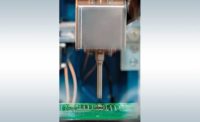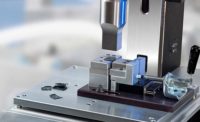Staking for Plastic Parts Assembly
New technologies are solving challenges in staking plastic parts
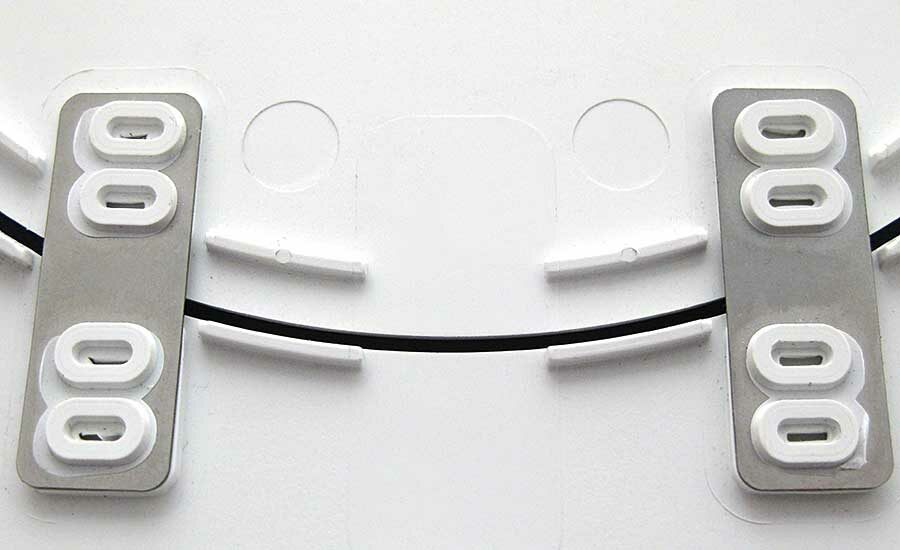
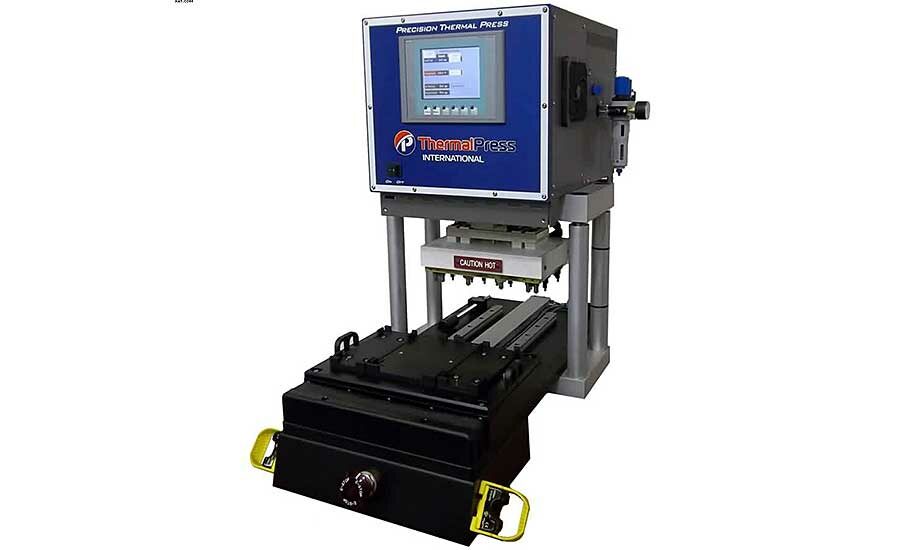
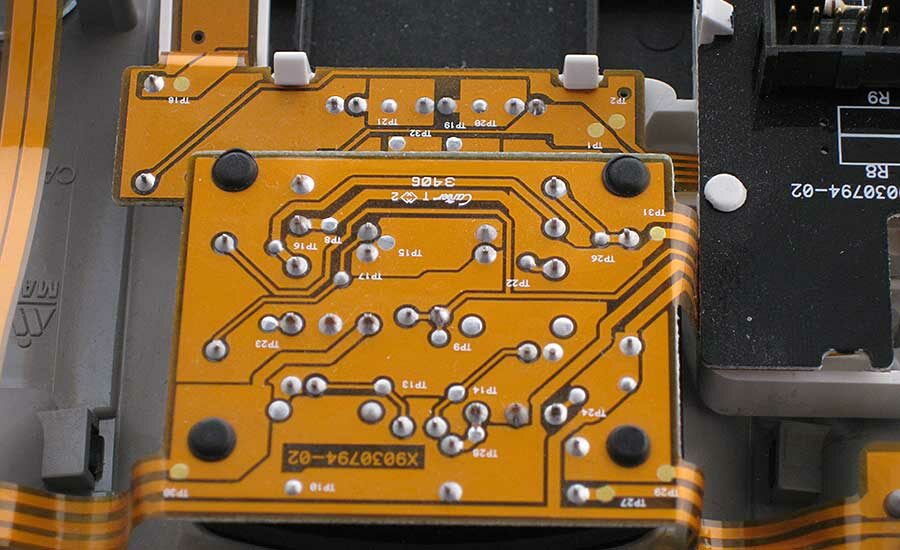



Staking is ideal for assembling plastic parts. It’s quick and inexpensive. It can join dissimilar materials. It eliminates the cost of fasteners and adhesives, and it allows engineers to loosen the tolerances for molded parts.
In staking, a part with one or more holes in it is slipped over corresponding posts on a base part held in a fixture. Then, a tool mounted on a press comes down, deforms the posts and traps the top part tightly against the base. The tool applies energy to the posts to melt the plastic. The process is used to assemble small products, such as printer cartridges, and large parts, such as automotive interior components.
The base part must be made of a formable thermoplastic, but the entrapped part can be made of any material: sheet metal, FR4, glass, rubber, cloth, filter material, thermoset plastic or another thermoplastic.
Almost all thermoplastics can be staked, but some work better than others. Acrylonitrile butadiene styrene (ABS), polyphenylene oxide, polypropylene and ABS-polycarbonate blends work particularly well.
Posts can be staked individually, or multiple posts can be staked simultaneously. Staking is usually done as a semiautomatic process, but the equipment also can be integrated with a variety of automated assembly equipment, including rotary indexing tables, pallet-transfer conveyors and even robots.
The tool can be mounted on a manual press, a pneumatic press or a servo press. The latter, while more expensive, gives engineers precise control over ram speed, stroke length, forming height and forming time.
Staking Technologies
There are several methods of forming a head on a post. Which to choose depends on the material, the part design, cycle time requirements and cosmetic issues.
One option is to melt the post directly with a heated tool. The post melts as the hot tool presses down on it. After the post has been formed, a shot of compressed air is blown onto the tool for 1 to 2 seconds to cool it down slightly. This ensures a clean release from the part and prevents the plastic from springing back to its original shape. Total cycle time varies from 6 to 10 seconds.
Hot-tool staking keeps the heat localized to the post, and it’s particularly good for glass-filled plastics. In addition, a large number of posts can be formed simultaneously, and the posts do not have to be located in the same plane.
In hot-air staking, compressed air is heated and blown onto the post through a nozzle. The air can come from above the post or from the side. When the plastic softens, an air-cooled staking tool is pressed onto the post to form the head. The tool remains in place until the plastic solidifies. Cycle time is typically 8 to 12 seconds.
Joints made with hot-air staking have a good cosmetic appearance. With the hot-tool method, the plastic can stick to the tool, producing strings of material when the tool retracts. With hot-air staking, the plastic solidifies quickly on contact with the cold tool.
Hot-air staking can be used to form several posts at the same time, and the posts do not need to be located on the same plane. However, engineers should provide enough room for each air nozzle to reach its post. Engineers should also make sure that there aren’t any parts near the posts that could be adversely affected by the stream of hot air.
The fastest of the forming methods is ultrasonic staking. With this method, the heat to melt the plastic doesn’t come from the tool itself, which stays cool throughout the process. Instead, the heat comes from friction between the plastic and the tool face, which is vibrating at ultrasonic frequencies. Cycle time can be less than 1 second. Other staking processes need a certain amount of recharge time, because heat transfers out of the tool.
Ultrasonic staking is usually done with low pressing force and high-amplitude vibrations. The speed of the ram must be carefully controlled, so that it does not exceed the melting rate of the plastic. In addition, the horn must start vibrating before it contacts the post. Starting the vibrations after contact could fracture the post. Similarly, it’s important to stop the vibrations before the tool contacts the part being trapped. The tool should finish forming the head with pressure alone.
Because the tool vibrates, there are limitations in the number and position of posts that can be formed simultaneously with ultrasonic staking.
The newest technology for staking is the PulseStaking process from Emerson. Each tip combines an electric heating element with a compressed-air cooling system. This design instantaneously heats or cools the tip by applying “pulses” of heating or cooling that precisely manage the temperature of the plastic. When current flows through the tip, electrical resistance generates heat. The thermoplastic boss is softened, and a head is formed. Next, a jet of compressed air cools the tip and resolidifies the plastic. Cycle time depends on the materials to be formed and the size of the boss.
New applications are possible with PulseStaking because the tips provide localized, adjustable temperatures during the plastic forming process, explains Priyank Kishor, global product manager for assembly technologies at Emerson. Multiple points can be staked simultaneously, even if they are made from different polymers. The process is also good for plastics with high glass content.
Unlike the hot-air and hot-tool methods, which radiate heat at all times, PulseStaking tips are independently and instantaneously heated and cooled. Their localized heating enables them to stake posts with consistent strength and a high-quality finish, even when they must be formed near other plastic parts. It also means the process is energy-efficient.
“If you have applications with embedded electronics, ultrasonic vibrations could damage them,” adds Kishor. “PulseStaking doesn’t have that problem.”
Yet another variation is the impulse staking process from SimpleStake. This process works by sending a low-voltage current across a specially designed hollow forming tip to heat it on demand. The tip is cool at the start of the forming cycle, but it can be heated up to 400 F within 2 seconds. Once the boss has been formed, a blast of compressed air enters the tube, instantly cooling the back side of the tip and venting through slots on the sides. This solidifies the plastic and creates a strong bond with the mating part. Once the button is cool, a short pulse of electrical power is applied to the tip to wet the surface of the plastic. This “CleanRelease” stage prevents sticking and stringing of the plastic, which is commonly seen with other methods of staking.
The process can be used form multiple posts simultaneously—even posts that are less than 0.5 inch apart, center to center.
Looking for a reprint of this article?
From high-res PDFs to custom plaques, order your copy today!





